The following article is designed to help hotel marketers adapt their marketing strategies in 2022, with a focus on generating more direct bookings. Much of the information shared comes from actual insights generated by working with both independent hotels and hotel groups across the world.
1 - It’s time to take your website seriously
2 - What is it that your guests really want?
3 - Getting to grips with your data
4 - Personalize content for every guest
5 - Nurture guests to drive bookings
6 - Create content that builds trust and helps the guest experience
7 - Smart tactics to beat the OTAs
8 - Understand booking engine road blocks
10 - Advertising Spend in 2022
Introduction
A lot has been written about how the hotel business is evolving in a technology led environment such as the one we all live in today. The growth and increasing dominance of online travel agencies (OTAs) and businesses such as AirBnb make this a challenging time for most hotels to stand out from the crowd. If your hotel isn’t part of a global group such as Hilton, Marriott or IHG then this task can be even harder.
But there is a way to stand out and while it may take additional investment in both resources and technology, successful implementation will not only help reduce the amount of commissions paid out to 3rd parties such as the OTAs but will also help you to grow your customer base, increase brand loyalty and make you more competitive. With commissions ranging anywhere from 15% to 35%, it’s imperative that hotels reduce their reliance on the OTAs and by doing so increase their profit margins substantially.
This blog article builds on the success of our 2018 Digital Marketing for Hotels article that was read over 10,000 times around the world in 2018. It also takes into account new research, technology updates and new tactics that can help any hotel.

1 – It’s time to take your website seriously
When was the last time you visited a hotel website and made an immediate online booking WITHOUT visiting (a) an OTA site, or (b) checking a competitor’s hotel website? Unless you’re the most impulsive of online shoppers, it’s unlikely that you’ve ever engaged in such activity and this is perfectly in line with human behavior when shopping or making purchasing (or booking) decisions on the internet.
So why is it that most (the overwhelming majority) of hotel websites try their best to convert a website visitor to customer WITHOUT educating the guest as to why they should book directly with the hotel, the benefits of doing so, and how the hotel will ensure that the guest’s experience will be optimal.
According to Google, 52% of hotel guests will leave an OTA website and go directly to the official website of the hotel. This is often referred to as the ‘billboard effect’ where the OTA site brings attention and drives interest in a particular hotel, which in turn drives traffic to a hotel’s website. This creates a wonderful opportunity for hotels to not only leverage the free marketing of their property provided by the OTAs but to also generate a direct booking at the expense of them. However, in my opinion, 99% of hotel websites globally are flawed, which directly impacts the conversion of website visitors to direct bookings. While this might seem slightly exaggerated, it's easy to understand the validity of this statement by simply conducting a search for hotels in almost any destination in the world. Here are a few reasons based on our research:
-
A) Most websites look exactly the same.
If you open up any number of hotel websites (from literally anywhere in the world as you’ll see below), you’ll notice a clear pattern when it comes to the structure and content of a website. You’ll see a large image / photo banner (or large video), navigation at the top and side, a ‘check availability’ box and a button that’s highlighted saying ‘Book Now’. The terminology may of course differ from country to country but in the main, each website will contain these features in the same way and herein lies the problem.
Here are some examples of this:
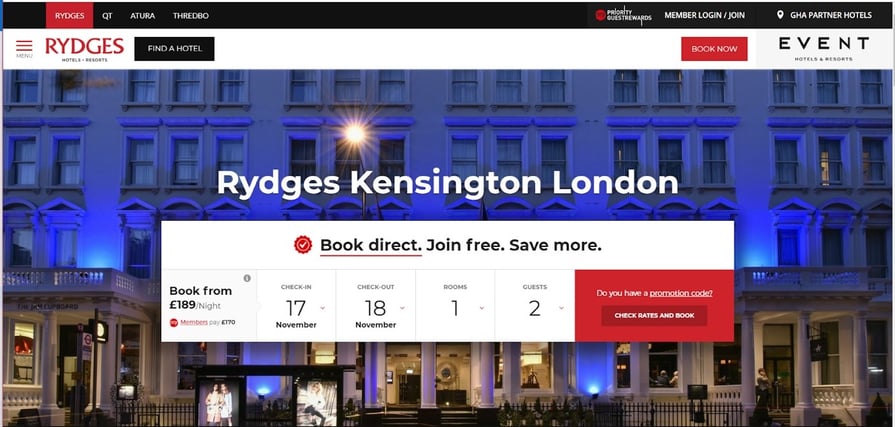
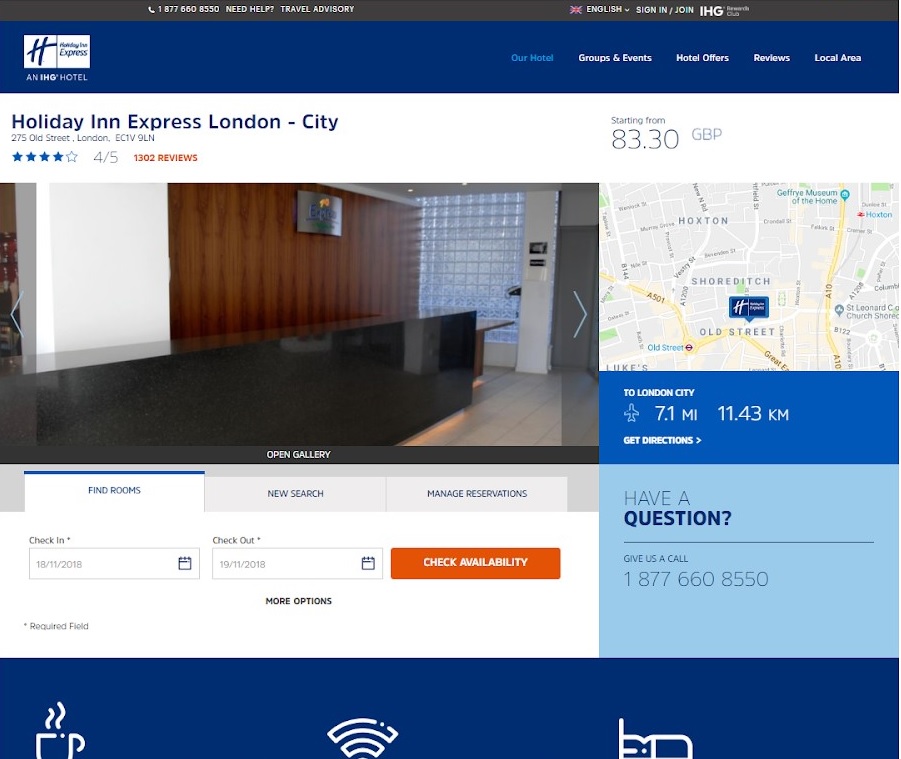
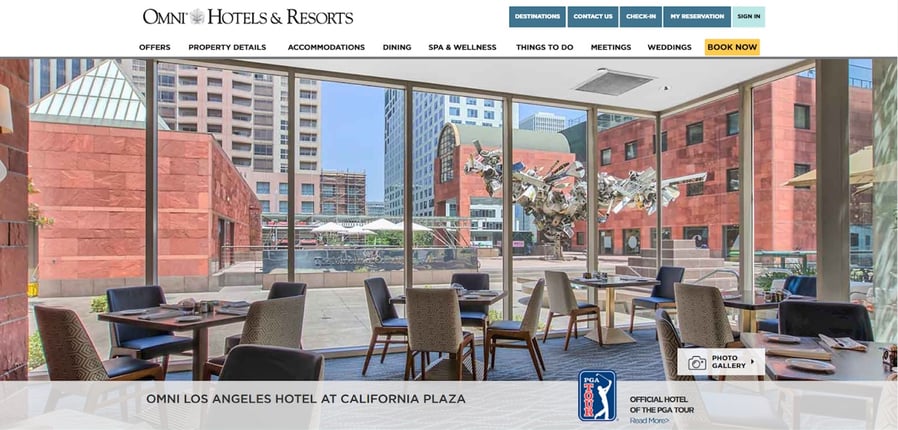

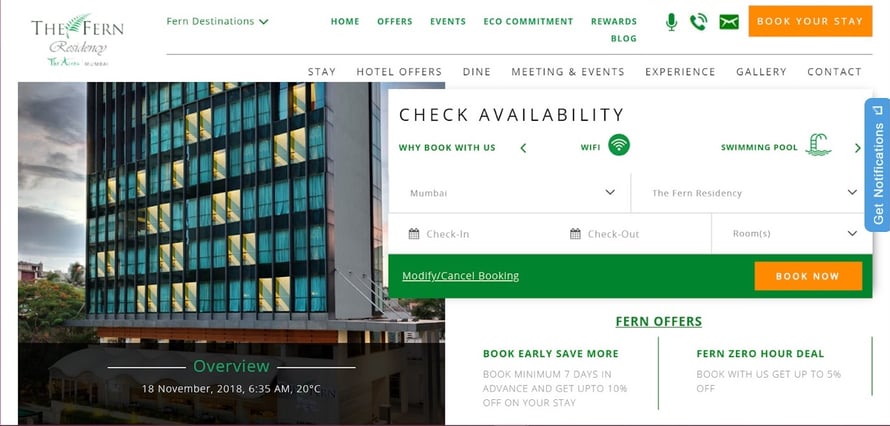
As we know, 52% of guests will visit a hotel’s official website after seeing the hotel on an OTA site. But when a visitor goes onto the website, a hotel needs to make the right kind of impression with the guest to (a) engage them to spend more time on the hotel’s website and (b) convert that visitor into a direct booking or at the very least, a subscriber on the hotel’s marketing database. But with most hotel websites looking the same, it becomes difficult for a hotel to create the type of first impression that impresses the guest to the extent where they start to engage with the brand and its offering.
Hotels today must think about differentiating their websites to engage guests and many areas of this article addresses how this can be achieved.
-
B) The need for unique content
Linked very closely to point (A) above is the distinct lack of unique content hosted on a hotel website. More often than not, a hotel will use the same images, text and promotions on their hotel’s OTA pages as well as their own website. From a guest experience perspective, if a prospective booker visits OTA pages and then comes to the official website, they’re not going to see anything different to what they’ve previously seen on other websites. I mentioned the need to create a great first impression earlier in the article and this becomes more difficult when content replication is prevalent across the internet for a specific hotel.
When I’ve spoken to clients about this, we’re often told that they have a limited number of quality images that they can use or even that the OTA guidelines insist on using a specific number of high quality images on their sites and these are often cited as reasons as to why the hotel doesn’t retain high quality images for use on their owned assets (such as their website) but the reality is that hotels must have the discipline to do this.
In addition, there are certain types of content or media that the OTAs don’t tend to host on an individual property page such as videos and downloadable helpful content (see section 6). Videos in particular provide an interesting opportunity for hotels as these are highly interactive, work well on all modern devices including smartphones and tablets and it’s now very cost effective to produce professional material than was previously the case. Hotels should therefore consider creating this type of content and hosting it front and center on their sites to help differentiate themselves from both OTAs and competitor hotels. This is a clear opportunity that most hotels are not taken advantage of.
-
C) Hotels are asking visitors to do the wrong thing
One of the challenges with most websites having a consistent content structure is that hotel website visitors are being driven to parts of the website that may not be to the benefit of the hotel. With over 15 years of website design and development experience, we understand that most website users will follow the path that a website lays out for them. For instance, if the main call to action on your hotel website is the ‘Book Now’ button or check availability search  section, the majority of website visitors will follow that lead and visit those sections of your website. As noted earlier, we’ve already seen that most hotel websites have these types of call to actions as the main focal point for website visitors. Clearly, most visitors will then visit those pages ahead of pages that may contain more meaningful content that explains more about the hotel itself, its location, facilities and brand story. The biggest challenge however, is that by directing guests to sections of your website that focus on price before educating the guest about your property, you’re essentially competing head-on with the OTAs. The sad reality here is that by focusing on price and driving user attention to this area of your website, your most likely going to lead the website visitor back to the OTA site - a platform that has many more prices and is deemed potentially cheaper than your own website.
section, the majority of website visitors will follow that lead and visit those sections of your website. As noted earlier, we’ve already seen that most hotel websites have these types of call to actions as the main focal point for website visitors. Clearly, most visitors will then visit those pages ahead of pages that may contain more meaningful content that explains more about the hotel itself, its location, facilities and brand story. The biggest challenge however, is that by directing guests to sections of your website that focus on price before educating the guest about your property, you’re essentially competing head-on with the OTAs. The sad reality here is that by focusing on price and driving user attention to this area of your website, your most likely going to lead the website visitor back to the OTA site - a platform that has many more prices and is deemed potentially cheaper than your own website.
-
D) Price is the focal point
OTAs have been successful over the last decade because they provided a clear and simple service to guests across the world. The service focused on providing a list of hotels for any location with price being the leading comparative factor used to filter hotels. For guests, this provides a one-stop shop where both live availability and price can be checked for any given date. But as we’ve seen, despite this solution, 52% of guests will still go to a hotel website first before booking a specific hotel. Why do they do this? There are a few areas of thought here. The first is that guests are looking to see if they can find a cheaper room rate than what’s available on the OTA site. With rate parity agreements, it’s unlikely that the net rate available is going to be any cheaper than what was previously noted on the OTA site but it's important not to forget that most guests will never have heard of 'rate parity' and therefore doesn't understand the impact of this on hotel room rates. The second school of thought is that guests are looking for more information about the hotel as the OTA contains limited information (often just one page of information about the hotel).
Whichever way you look at it, the reasons for a guest to visit an official hotel website should not be underestimated nor undervalued and if understood properly, will help to define your website content appropriately for greater effectiveness. For example, if we understand that most guests visit your website to compare rates with an OTA site, and we know that rates are unlikely to be cheaper (they’re often more expensive), then it would make more sense to direct them to a page on your website that educates them about why they should be booking directly on your website compared to booking on an OTA site. It’s therefore important to have strong and compelling reasons as to why a direct booking is more beneficial to the guest than not. In addition, if the guest is looking for more detailed information about the hotel, then the hotel should not be directing guests to the booking pages, which will typically contain even less information than a typical OTA page for the hotel. As we’ve already discussed, website visitors will follow the navigational path that’s laid out to them on the website, so if hotels continue to highlight booking (and price) focused pages without educating the guest, they’re less likely to convert them into a direct booking. Moreover, by following this approach, hotels are playing into the hands of the OTAs.
Hotels are actually playing into the hands of the OTAs - and this needs to change
There’s no doubt that hotel guests have always been price conscious, but the question is, have guests ever been more price conscious than they are today? OTAs have been very clever by educating the average online guest to look at a combination of room prices and traveler ratings but prior to this information being so readily available online, was the average guest as price focused as they are today? We’d argue not and believe that part of the reason that this shift has occurred is because the highlighted parts of a hotel page on a OTA site are the room cost and guest ratings. Most OTA pages don’t focus too much on hotel amenities, service or other quality metrics, which in summary can also be defined as the very things that make a hotel stand out from its competitive set.
The challenge here has already been touched upon above, but most hotel websites today try to replicate the OTAs with regard to the focal areas of their website, which are almost always the ‘Book Now’ or ‘Check Availability’ buttons or sections on the website rather than focusing on other, more qualitative aspects of the hotel that would help differentiate one hotel over the next and also help justify a higher room rate. By focusing on just room rates, hotels are playing into the hands of the OTAs and reinforcing (rather than disrupting) the thought process of the modern-day guest, who has been trained to focus on room rates.
2 – What is it that your guests really want?
When we work with a new hotel, we always ask a series of questions to senior stakeholders that help us gain a deeper understanding of the property and its guests. Some of the questions are:
- Why do guests choose to stay at your hotel?
- If your closest competitor (in terms of star rating and proximity) was marketed at exactly the same room rate as your hotel, which hotel would a guest choose?
- What are the top 5 reasons that a guest would book a room in your hotel?
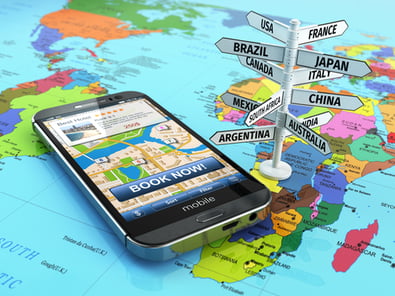 While there is certainly a degree of overlap between each question, it’s often interesting to receive the results from a hotel in order to ascertain employee thoughts and mindset. Once this is complete, we test these answers by creating an internal process that gathers data from the hotel website, email inquiries and call center conversations – all tracking the types of questions that actual guests are asking. Once there is enough data for analysis, we can start to identify how aligned a hotel team is to the needs of its guests and more importantly, the actual reasons why guests are considering the hotel for their stay.
While there is certainly a degree of overlap between each question, it’s often interesting to receive the results from a hotel in order to ascertain employee thoughts and mindset. Once this is complete, we test these answers by creating an internal process that gathers data from the hotel website, email inquiries and call center conversations – all tracking the types of questions that actual guests are asking. Once there is enough data for analysis, we can start to identify how aligned a hotel team is to the needs of its guests and more importantly, the actual reasons why guests are considering the hotel for their stay.
While the analysis helps to re-focus employees, there are other tangible benefits of this exercise:
- Drive consistency. If the same or similar questions are being asked by guests across multiple channels, it’s important that the hotel provides a consistent, unified answer. This can be especially difficult when multiple teams are managing different channels, so the creation of a ‘script’ or similar process coupled with training, can help a hotel enormously.
- Identification of ‘new’ opportunities. Every now and then, this process unearths a new opportunity for the hotels that we’ve worked with that not only creates a new unique selling point (USP) for the hotel but also provides both organic and paid Google ranking opportunities as well as a strong reason to Book Direct with the hotel. Once such example arose when working with a budget hotel in Orlando, Florida. When analyzing guest questions, our team identified that a large number of questions asked during the pre-booking stage via the call center and website were focused on Amazon.com deliveries and specifically, if the hotel provided free package handling from Amazon. Upon further analysis of the data, we found that over 40% of these requests came from Brazilian tourists.
Armed with this information, we started to research this more and found that the hotel had typically been charging between $5 and $10 per package received for a guest. When we asked the manager why, he mentioned that the inconvenience was what they were charging for, but that there actually was no direct cost incurred by the hotel for handling packages. When asked by guests if the hotel charged for Amazon deliveries, the hotel staff correctly mentioned the charges incurred per package but our team identified this as a real conversion and direct booking opportunity and began to dig deeper.
First, we checked Google to see if any other hotel was marketing this service, whether free of charged or for a nominal fee and to our surprise, found that this area was totally untapped. Even TripAdvisor hadn’t created a Top 5 Hotels in Orlando that Provide Free Amazon.com Deliveries article, which would normally be found at the top of a Google search engine results page! What we did find were multiple forum questions, where people were asking the very same question as the hotel’s call center and website had been asked! Second, we also checked to see if any hotel was paying for Google adverts for the same / similar types of search terms – there were none, meaning that this area was totally untapped and confirmed as a real opportunity for the hotel.
Our team went back to the management and asked if free package handling could be used as a direct room booking incentive for those guests who booked directly with the hotel from the official hotel website. In other words, if a guest booked the room from the hotel’s own website, they qualified for free Amazon.com or other E-Commerce package handling but if they booked via the OTA website, the fee would still be applicable. Not only was this implemented but started showing results within days with both call center, front desk and website teams aligned with a consistent script and a unified message to anyone who asked about this moving forward.
3 – Getting to grips with your data
We spoke above about the importance of collecting data for a hotel and how this data can be used to train employees and identify new opportunities, but in the digital world, getting to grips with and understanding online data can significantly improve how you market your hotel. That said, we understand that it’s getting harder and harder to not only access data but to use it for a hotel’s benefit.
Since 2015, Booking.com has made guest data anonymous and in doing so, have removed the ability for hotels to access guest information including email addresses. This not only forced hotels to create new data collection processes but it can be argued, consequently increased guest frustration at having to provide information to a hotel at the time of check-in that would previously have been provided to the OTA at the time of booking (most guests won’t understand that data isn’t passed onto the hotels in full by the OTAs once a booking has been made). In addition to this, GDPR implementation arguably impacted hotels more than any other type of business given that GDPR restricted data use and communication to all EU citizens.
But data isn’t just about guest data and email databases. It’s also about understanding more about every  individual guest that visits your website, the pages they visit and how frequently they visit your website. Having the ability to understand exactly what individual guests are looking for from your hotel (by tracing the steps they take on your website) provides vast marketing opportunities for hotels in pursuit of converting that website visitor into a direct booking.
individual guest that visits your website, the pages they visit and how frequently they visit your website. Having the ability to understand exactly what individual guests are looking for from your hotel (by tracing the steps they take on your website) provides vast marketing opportunities for hotels in pursuit of converting that website visitor into a direct booking.
While this data isn’t readily available, there are numerous tools that can be added to your website that can unlock this data and more importantly, allow you to use this data to drive more revenue for your hotel.
Here’s an example of how this can work once a guest lands on your website:
|
A) Example 1 – Standard Leisure Traveler Room Booking: |
|
|
STEP 1 |
Guest lands on your home page |
|
STEP 2 |
Visits the Rooms Page |
|
STEP 3 |
Clicks through to the Suites Page |
|
STEP 4 |
Visits the Family Rooms Page |
|
STEP 5 |
Visits the Leisure Facilities section |
|
STEP 6 |
Visits the Swimming Pool page |
|
STEP 7 |
Visits the Spa page |
|
STEP 8 |
Goes back to the home page |
|
STEP 9 |
Visits the Gallery Page |
|
STEP 10 |
Goes back to the home page |
|
STEP 11 |
Visits the Restaurants and Bar pages |
|
STEP 12 |
Visits the Special Offers page and looks at the Advance Purchase offer At this stage: 1. A website pop-up appears on this page with the following message “Unlock our latest offers and promotions instantly. Simply add your email address below and press Submit” |
|
STEP 13 |
Engages with the check availability section of your website and enters travel dates before entering the booking engine |
|
STEP 14 |
Leaves the website |
Based on the above and the tracking that can be in place on the hotel’s website, the following assumptions can be made:
1 - The guest is looking for a booking for their family
2 - They are interested in the leisure facilities, the Spa and food and beverage options.
3 - They would also be keen to review special offers
4 - Visiting the advance purchase offer page indicates that this isn’t a last minute booking, which in turn increases the possibility that the guest has not yet made a booking elsewhere. The dates are verified by what is entered (and captured) by the booking engine.
5 - The guest location is determined by the IP Address of the guest’s device and the hotel can track if the guest has previously visited the hotel website.
Armed with this data, the hotel can now nurture the guest using the following tactics:
Remarketing / Retargeting Campaigns on Google, Facebook & Instagram- Email marketing. As we know that the guest is looking for a family stay, interested in the leisure facilities on offer and wants to learn about the latest promotions, the hotel can now send highly targeted, personalized emails that can take the guest’s preferences into account by providing content (images, messaging and special offers) based on this.
1. Direct Booking incentives can also be shared with the guest via email. These can include free food and beverage vouchers, early check-in / late check-out and almost anything else that the hotel believes will be compelling enough for a guest to book directly with the hotel rather than via an OTA.
2. The hotel can by-pass rate parity agreements with the OTAs by sending a pre-configured booking code by email to the guest.
- Richer guest profiles. Each time the guest returns to your website, this data will also be tracked (along with each page visited) allowing the hotel to build a richer profile for each individual visiting their website.
|
B) Example 2 – Business / Group Booking |
|
|
STEP 1 |
Lands on Home Page |
|
STEP 2 |
Visits the Rooms Page |
|
STEP 3 |
Visits the Double Rooms Page |
|
STEP 4 |
Meetings and Conferences Page |
|
STEP 5 |
Restaurants & Bars Pages |
|
STEP 6 |
Goes back to Meetings and Conferences Page |
|
STEP 7 |
Downloads a brochure for the Meeting facilities (email address and potential event date is captured via a short and simple form). |
|
STEP 8 |
Goes back to Restaurants and Bars Pages |
|
STEP 9 |
Leaves the website |
Based on this activity, we have data for the following:
2 - Location (based on IP Address)
3 - We can strongly assume that this guest is a business traveler and is looking to host an event or conference.
The hotel now has a few options to drive conversion:
- The details of the guest (based on the form fill plus IP address and historical page viewing data) is passed to the Events Sales Team.
- The Events Sales Team can now contact the guest and provide further information about the facilities, and promotional offers valid during the potential event date provided and can arrange a meeting with the guest to discuss the requirements further.
- The Events Team can use data such as the guest’s interest in their Restaurants and Bars in order to create customized packages.
- By having this customer insight, the sales team can tailor their communication knowing what the guest is interested in, which instantly increases the guest’s experience with the sales team.
In addition to the above, each retargeting campaign and each marketing email can be triggered automatically based on the actions of guests on your website. Automation reduces manual work, reduces human error and provides a highly efficient marketing machine for businesses looking to take advantage of technology in the digital age.
The examples above highlight the role that data can play when marketing to potential guests and room bookers. Gone are the days of creating one large campaign and hoping that your entire target audience relates to this and feels compelled to book with you. Today, guests value their time, demand personalization and hotels that provide this, stand a much better chance to achieving success.
4 – Personalize content for every guest
As we already know, guest expectations are higher than they’ve ever been and hotels are feeling the consequences of this. It’s therefore important that at every interaction point with a guest, data is recorded that helps a hotel understand more about that individual, their interests and any insights that can increase the quality of the guest’s experience with the hotel.
How can this data be collected?
It’s not as difficult as you may think. There are a host of tracking tools that can be implemented on your website that track an individual’s journey and interactions on your website. These include the specific pages visited by a guest, how frequently they return to your website, the searches they conduct as well as the content they download or engage with. All of this data when combined and stored in a single interface becomes use-able content that can be used to personalize a guest’s experience with a hotel.
How to personalize content
 Most websites today are dynamic by nature. They have the ability to adapt the content hosted on it in terms of size and structure based on elements like device type and connection speed. But in addition to this, content can also be dynamically customized based on what your website knows about a specific visitor. Here are some potential use cases for a hotel:
Most websites today are dynamic by nature. They have the ability to adapt the content hosted on it in terms of size and structure based on elements like device type and connection speed. But in addition to this, content can also be dynamically customized based on what your website knows about a specific visitor. Here are some potential use cases for a hotel:
- If the website visitor has been on your website at least 3 times and conducted numerous searches but has not yet made a booking, a simple pop-up can appear that can be designed to help the guest complete the booking by offering a free and immediate telephone call back. If a website visitor has browsed your spa pages, the next time they visit your home page, your website can show text and images about your Spa and perhaps even offer a time-limited offer, whereby the guest can receive a 25% discount at the Spa by booking directly through the website. The world's best e-commerce websites do this incredibly well and hotel's should consider applying the same to their businesses.
There are unlimited combinations of content and activity that can be combined to create a dynamic content that is personalized for each guest but data collection is at the heart of any potential activity.
5 – Nurture guests to drive bookings
Each of the website home pages showcased above in section 1 are from different brands and are located across the world, but as we identified earlier, none are offering any major call to action to a guest other than to “book now” or to “check availability”. While this user experience enables guests to start the conversion process (i.e. making a reservation), how many guests are likely to complete the booking on their first visit? The reality is that very few (if at all) will. It’s therefore hugely important that hotels identify ways of interacting, engaging and building relationships with potential guest BEFORE the booking process. This will enable hotels to increase their chances at converting website visitors into paid guests.
How to nurture a guest from website visitor to paid reservation
This process will of course differ for every hotel, but the general theory behind this approach is valid and deserves attention:
When a visitor lands on your website, consider the following approach:
- If this is the first time they are visiting your website, tell them more about your hotel:
- Show them testimonials (or a TripAdvisor feed at the very least) that show your hotel cares about what others think about them
- Provide them with helpful content (especially if their IP address indicates that they are located outside of your city). Collect data in exchange for the ability to download this content. See the next section on content creation for more information about this.
- Once you collect data, use this to automate communication by email or SMS to the guest and drive them back to your website to complete the booking.
Tip: Deliver discounted booking codes to bypass rate parity and drive urgency of booking.
Every hotel is unique, so it’s important that you identify (a) why someone is interested in staying at your hotel and (b) what will entice this person to book directly with you. Remember, most OTAs will never understand what makes your hotel special, whether it be culturally within your hotel or the location you’re in, so use this information, which are often the things you take for granted, and communicate this effectively with each guest that visits your website or exchanges data with you.
6 – Create content that builds trust and helps the guest experience
We’re often asked by hotels why they should create content, the benefits of doing so and what the possible revenue outcomes could be by engaging in such an activity. Many hotels are unsure as to what type of content would benefit a guest’s experience. At Nexa, we strongly advocate the creation of specific types of content for hotels but also encourage hotels to distribute this content as part of their overall marketing activities. Importantly, we believe that every piece of content created for a hotel must be created for a specific reason and purpose.
Here are a few examples:
- Local Guides:
- Most people looking to book a room at your hotel is unlikely to be from your local area. They may never have visited
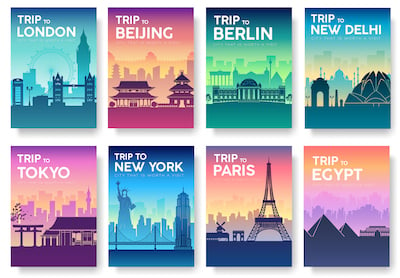 your town, city (or country) before so if your hotel creates a Local Guide to x containing local tips, customs and information that will help your guest get the most out of their stay in the locality, this has immense value. We would encourage a hotel to create this type of content in the form of a branded e-guide that can be downloaded in exchange for data such as an email address. This email address can then be used to deliver nurturing messages as described above.
your town, city (or country) before so if your hotel creates a Local Guide to x containing local tips, customs and information that will help your guest get the most out of their stay in the locality, this has immense value. We would encourage a hotel to create this type of content in the form of a branded e-guide that can be downloaded in exchange for data such as an email address. This email address can then be used to deliver nurturing messages as described above.
- Most people looking to book a room at your hotel is unlikely to be from your local area. They may never have visited
- Local Discounts:
- Everyone likes to save money! Use this to engage with local businesses (who are also targeting out-of-towners) by creating a list of discounts or incentives that your guests will appreciate.
- Use this content as a direct booking incentive or a simple welcome gift at check in. If you do choose to use this type of content post-booking, remember to communicate this as an incentive on your website on your pre-booking and information pages.
7- Smart tactics to beat the OTAs
The OTAs have a number of advantages when it comes to attracting hotel bookings on their websites and a few of these are listed below:
- They attract huge volumes of website traffic both organically and paid advertising tactics. This is difficult for hotels (and especially independent properties and small groups) to compete with as the way OTA websites are created are fully aligned to the recommendations provided by search engines such as Google. Google tends to rank websites that contain high volumes of quality content higher than smaller websites for most search terms and the OTAs due to the number of hotels and destinations they operate in, have vast amounts of content.
- The OTA engine showcases a multitude of options for guests looking to book a hotel room from ratings through to different room types. Again, this is very difficult to compete with.
- Low Price Perception. Most online room bookers now believe that the OTAs provide the cheapest rooms available in the market and that booking with an OTA is likely to save the guest money. While rate parity agreements suggest that this should not be the case, hotels do a poor job of proving this and on many occasions it’s also evident that the OTAs are breaking their own rate parity agreements and taking a cut on their sales margin to showcase themselves as cheaper than competitors or booking with the hotels themselves.
- OTAs have a large user and customer base that they use to communicate with via emails, mobile application notifications and retargeting messaging.
- They also have unmatched traveler data and tracking in place that will identify booking trends and also allow them to know when a customer is searching for a specific hotel at a specific time.
- OTAs have vast advertising budgets that are mind blowing. Booking.com and Expedia for example, invested over $8 billion in advertising in 2017.
- Finally, rate parity agreements make it very difficult to compete with the OTAs on a price per room basis. Difficult but by no means impossible. Hotels need to be creative in terms of how they deliver special rates to potential guests without breaking parity agreements.
The above list presents numerous challenges, but if hotels are serious about driving higher volumes of direct bookings, they should also be doing much of the below:
- Checking parity regularly or having real-time processes in place to alert hotels when parity has been broken.
- Collect and store OTA guest data
- Nurture OTA guests and communicate with them post-stay for direct booking education
- Keeping your websites and social media platforms fresh and up to date
- Creating Fresh Content – Photography & Videos
- Checking all review sites and responding to all reviews
- Creating clear packages / bundles that are easy to understand and communicate
- Digital campaigns / Retargeting
- Tracking website data and conversion rates
In addition to this, hotels must get smarter in terms of the content they create FOR the OTAs. Each hotel typically has their own dashboard inside an OTA portal that allows them to upload images, room information and descriptions to help showcase their hotel page on the OTA site. While it’s absolutely necessary to ensure that a hotel’s OTA page looks good and is representative of the hotel and offering, what we often find is this:
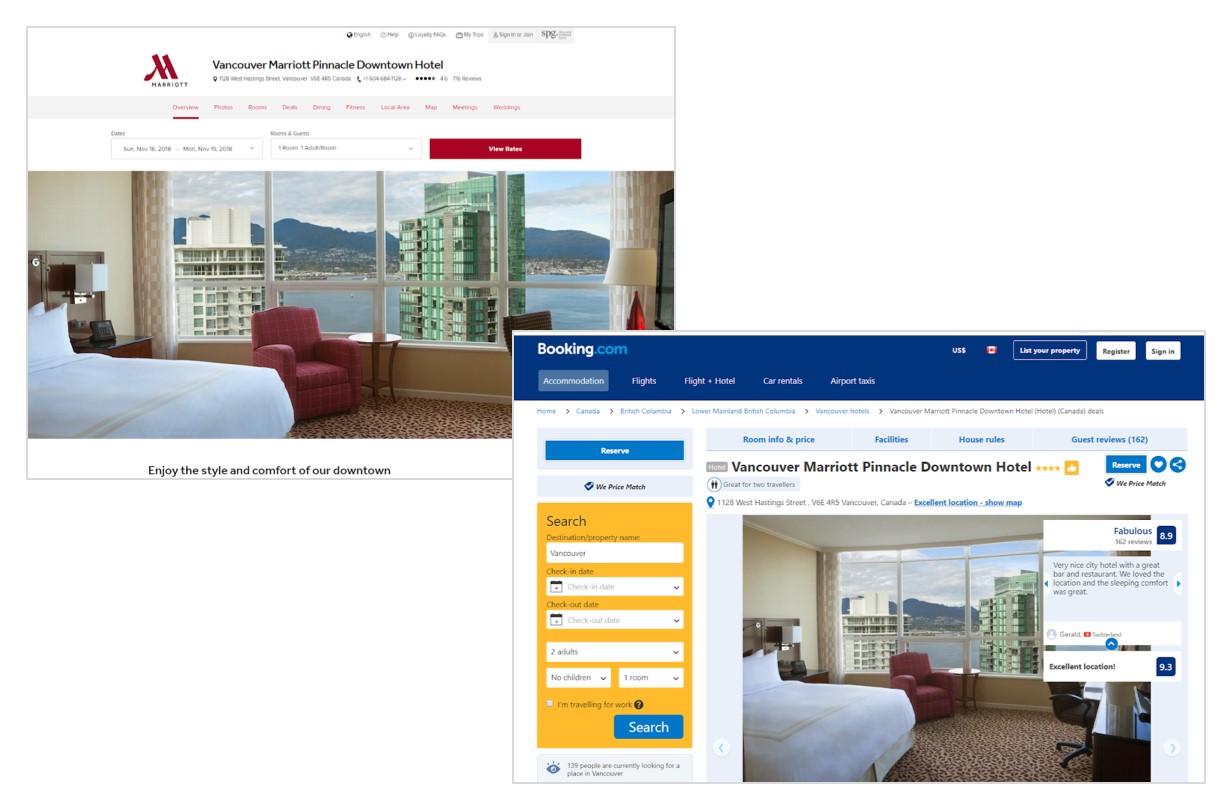
The hotel featured above (Vancouver Marriott Pinnacle Downtown Hotel) is using exactly the same content in the form of images and text descriptions for Booking.com as they are on their own website. The problem with this approach is as follows:
- With 52% of online bookers visiting your hotel website immediately after visiting your OTA page, they will see no difference or reason why they should book directly with you instead of booking with the OTA.
- The Booking.com content above is richer in that reviews and ratings are embedded over the image. This shows a level of transparency, which is what online consumers want and desire when making purchasing decisions.
Hotels must have a clear strategy when dealing with OTA page content and our recommendation is to keep your absolute best content for your own website rather than use these on OTA sites. Hotels need to try and differentiate their offering rather than replicate it across the web.
8 – Understand booking engine road blocks
When was the last time you tried to make an online booking through your hotel’s own booking engine? What was the experience like? Did you find the information clear and relevant? Did you understand the cancellation or refund policies?
 Chances are that the experience wasn’t as efficient as you’d hoped and we see this on a regular basis. The problem with most booking engines is that they are powered not through your website but by a 3rd party booking engine provider or GDN. In this scenario, hotels are normally offered a choice of different booking engine templates from which they select the one that seems like the best fit for their business. The void here is that these 3rd party booking engines do not offer the same experience as the guest has just engaged in on the hotel website – after all, it’s a completely different system. The other challenge is that most booking engines prioritize content that the hotel owner or website administrator seems important to them and not necessarily the content that’s most relevant to the guest.
Chances are that the experience wasn’t as efficient as you’d hoped and we see this on a regular basis. The problem with most booking engines is that they are powered not through your website but by a 3rd party booking engine provider or GDN. In this scenario, hotels are normally offered a choice of different booking engine templates from which they select the one that seems like the best fit for their business. The void here is that these 3rd party booking engines do not offer the same experience as the guest has just engaged in on the hotel website – after all, it’s a completely different system. The other challenge is that most booking engines prioritize content that the hotel owner or website administrator seems important to them and not necessarily the content that’s most relevant to the guest.
Our recommendation here is simple but makes the assumption that the guest is likely to book your hotel via a OTA if they don’t book directly on your website and is summarized here:
- Try to replicate the pricing section of your booking engine as shown on OTA sites. The pricing needs to be clear, ideally with the cheapest room first and easy to compare in the likely event that the guest has both your booking engine and the OTA page open on separate browser tabs.
- Highlight direct booking incentives on your booking engine page. The more compelling the direct booking benefits, the more likely the guest will book direct with you.
- Match cancellation and payment policies using the same terminology as the OTAs – so it’s easy to understand by everyone.
- Consider adding a “Call Back” call to action on key booking pages. Most OTAs do not offer this service and many guests have queries that will require answering before a booking is made. This is your perfect opportunity to take the conversation offline and close the booking.
9 – Simplify your message
When speaking to hotel clients about their offers policy or existing room promotions, we often come across promotions thought up by team members that haven’t considered the relevancy of the offer for potential guests. It’s important that all promotions are relevant to your guests, relevant to your property and easy to understand. Use easy to understand names for any promotions so that your guests know exactly what they’re getting without the need for additional guess work, which is turn may cause doubt regarding the validity of the offer, which in turn will negatively impact uptake and adoption of the offer.
10 - Advertising Spend in 2022
It’s estimated that Booking.com and Expedia see a return of about $16 for every $1 they spend on marketing, so it’s important that hotels understand where and how they should be spending advertising and marketing dollars in 2022.
While it’s impossible to suggest a formula that works for every hotel, the table below should help to provide some guide when planning your online marketing and advertising budgets:
|
Marketing Channel |
When should you use it? |
|
|
Intent based searches but be careful not to use Google for the types of short-tail keywords that will not convert into a booking. You should consider using Google Display banners for remarketing to those who have already visited your website. Think about using special promo codes within the ads to track effectiveness of these. |
|
Facebook & Instagram |
We’ve grouped Facebook and Instagram as these adverts on these channels can be created from the same platform. We wouldn’t recommend using either of these channels for anything other than brand building or retargeting. When it comes to retargeting, Facebook and Instagram offer you the opportunity of showcasing your property using images and videos that will educate the guest about why they should stay at your hotel. Consider using ‘Direct Booking’ incentives within your campaigns to further increase direct revenue opportunities |
|
Programmatic Adverts |
Depending on the type of programmatic platform you use, there are some incredible opportunities using the data available. Being able to target those who are in the market for a flight / hotel to your destination allows you to customize messaging and tailor make promotions and offers for you hotel. In addition, combining available data with other 3rd party sources can assist you to further pinpoint target audiences. |
|
Snapchat |
Snap / Snapchat presents some interesting marketing opportunities at a cost-effective rate, that hotels should consider using if their target audiences are millennials or those who reside in demographics where the importance of social media privacy drives usage amongst an older age group. Some Middle Eastern countries for example, have higher Snapchat adoption rates than most other countries because of the platforms ability to erase content after 24 hours of publishing. |
|
|
An expensive online platform, LinkedIn nonetheless does present marketing opportunities for hotels. Targeting secretaries or personal assistants as well as meeting room or event bookers may drive awareness for your business. |
In closing
With a small number of exceptions, most hotels and hotel groups that we speak to highlight the cost of doing business with the OTAs as a restricting factor to their growth in profitability. In markets where there is an oversupply of hotel rooms, this issue becomes particularly challenging, where commission costs remain a constant percentage of revenue but revenue is in decline. Most hotels consider the OTAs as a ‘necessary evil’ and while that’s easy enough to understand and relate to, the large majority of hotels still haven’t quite figured out or even understood the value that OTAs bring from a brand awareness perspective and how this can be leveraged from a direct booking perspective.
As we have already seen, 52% of guests will visit the hotel’s official website immediately after visiting an OTA website. That presents huge opportunities that require a clear and structured strategy to help convert that website traffic into direct bookings. The reality is that almost no hotels have this in place. As we’ve also seen, hotel websites in general fail to educate guests about the benefits of booking directly in addition to other issues that relate directly to user experience and content duplication.
In summary, hotels that are serious about increasing profitability and reducing OTA reliance need to create implementable strategies that are designed to do just this. It takes commitment and discipline but once achieved can be a sustainable way to grow the business in the digital age.
Looking for help?
Nexa has worked with independent hotels, small groups and global chains since 2005, helping them with digital marketing in the form of website design and development, direct booking strategies, social media marketing and performance marketing.
With offices in New York, Manchester and Dubai our team can help any hotel across the world grow better using tried and tested tactics created to drive return on investment.
%20(1).png?width=2701&height=607&name=BRC_NEXA_LOGO_BLACK%20%26%20VIOLET%20(1)%20(1).png)
%20(1).png?width=2701&height=607&name=BRC_NEXA_LOGO_WHITE%20(2)%20(1).png)
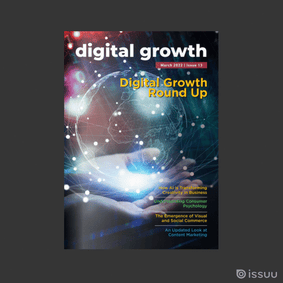










![10 Hotel Marketing Strategies to Increase Direct Bookings [Updated for 2023]](https://445465.fs1.hubspotusercontent-na1.net/hub/445465/hubfs/OTA%20and%20Direct%20Booking%20for%20Hotels.jpg?length=300&name=OTA%20and%20Direct%20Booking%20for%20Hotels.jpg)



Comments